Chiroptophobia – the fear of bats; the dark creature of the night that has struck terror into the hearts of people for centuries. Spanish explorers returning from Latin America spoke of bats that lap fresh, warm blood, like a cat at a saucer of milk. They named them Vampire bats after the mythological undead that stalk the night in Eastern European folklore.
It was this unfortunate moment, when 3 species of blood-drinking bat out of 1200 bat species worldwide were named, that the entire bat family was damned to a future of being demonized. This was compounded in 1897 when Bram Stoker published his novel “DRACULA” where he introduced an idea that the blood-sucking Count could shape-shift to that of a large bat in order to flutter blackly at Lucy’s window during his deadly seduction.
The idea of bats may still feed nightmares for many today, but when we look closely at bats we find them not to be the stuff of horror movies, but rather truly fascinating creatures that are far from scary. The Flying-fox is so named due to its facial features being more like those of a cute young fox than a terrifying monster.
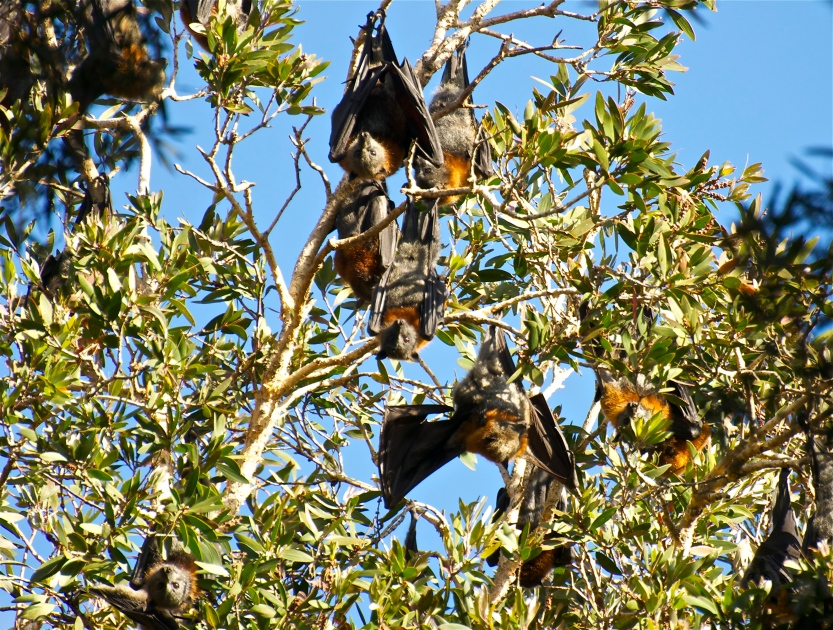
I first encountered the megabat, the Grey-headed flying fox in 2005 during a trip to Sydney, Australia. They were hanging in the trees above the cafe in the Royal Botanic Gardens. Several years later I moved to Sydney and returned to the place that I had seen them. They were gone. I discovered that in 2007 the Garden Management team took the decision to use sound recordings to disturb the bats causing them to move to a new camp as the colony were causing irreparable damage to the Garden’s historic trees.
A little research revealed that the colony had moved to Lachlan’s Swamp in Centennial Park. I set off to find the camp; it didn’t take long. You don’t need to get very far into the paperbark swamp before the smell of ammonia starts to scratch at the back of the throat, followed by the sound of chatter and squabble from above. The tree branches bow with the weight of strange black and ginger, hairy fruits. Look closer and the fruits start to open and close their huge leathery wings. Look up at them for longer and you notice that these bats are curiously looking back at you with those round amber marbles.
The Grey-headed Flying-fox is endemic to eastern Australia, including Queensland, New South Wales and Victoria. Flying-foxes are also known as Fruit-bats as their diet consists of pollen, nectar and ripe fruits, particularly figs. They are essential in maintaining a healthy eco-system due to their role as pollinators and seed distributors. The Eucalyptus tree requires pollen from another Eucalyptus tree (as opposed to pollen from a flower on the same tree) in order to produce fertile seeds and bats play a key role in this cross pollination. Due to the large distances traveled by the bat, they distribute seeds in their scat much further afield than other distributor species. Flying-foxes can cover great distances with some specimens fitted with tracking devices covering over 2000km (1243 miles) during migration. Most specimens travel around 15km (9.3 miles) from the roost each night.
The flying-fox is a big animal. With a wingspan of over 1 meter (3.3 ft) it is understandable why people may be struck by fear as this black, raven sized creature flaps out of the darkness, passing close to your head during a late night walk home from the city. I have personally felt my heart leap up into my throat as a black shadow whooshes by, screeching and squawking as it flaps into a nearby tree. The fear always gave way to a curiosity that had me following it to the tree to watch it feed.
Despite the popular phrase “as blind as a bat” the Flying-fox has excellent eyesight. Their day vision is good but their large eyes make their night vision excellent, which helps navigate through trees at speed in a way that humans could not hope to achieve.
I came across a number of live Flying-foxes in small cages on the streets of the city of Medan in Sumatra, Indonesia. At first I thought they were for sale as pets, but I soon realised that they were intended for eating. Known as chicken of the cave, they are consumed in several South East Asian countries, they are delicacy barbecued, fried or stewed. Crispy bat wing is a particular favourite.
Bats have a reputation for being dirty, disease carriers but again, this is unjustified. They spend a great deal of time cleaning and grooming themselves and others in the colony. A Flying-fox keeps itself as clean as a family cat.
Nature provides some wonderful spectacles. One such spectacle is, without doubt, the sight of thousands of flying-foxes leaving the trees of Centennial Park at sunset and flying over the suburb of Paddington towards Sydney Harbour to feed on fruit and tree blossom. They cut a striking silhouette against a burning Australian sky.
These wonderful creatures are not the stuff of nightmares or blood-sucking vampires of horror stories. Take the time to see them as they really are; peaceful animals that spend their nights pollinating trees and distributing seeds as true gardeners of the forests.
If you enjoyed this post, please follow Incidental Naturalist.
Comments and shares are welcomed.
Categories: Australia
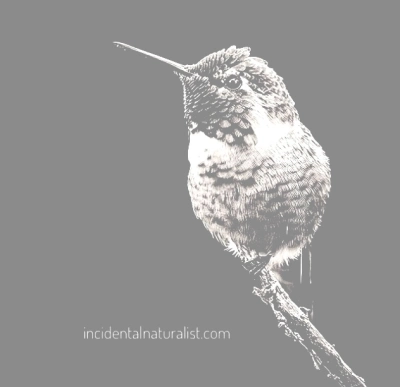




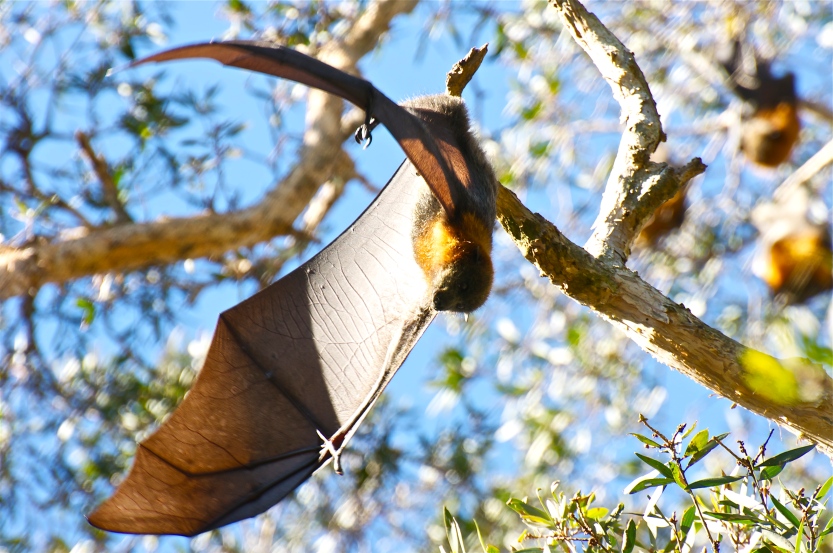
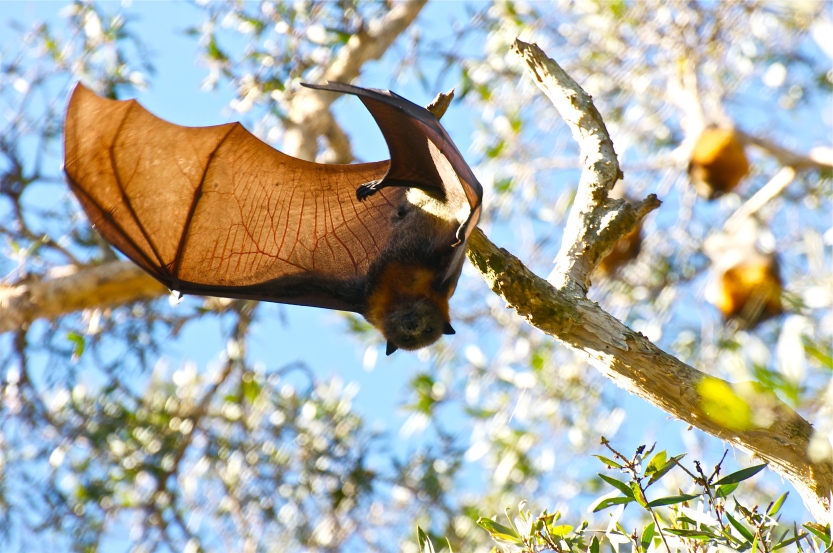
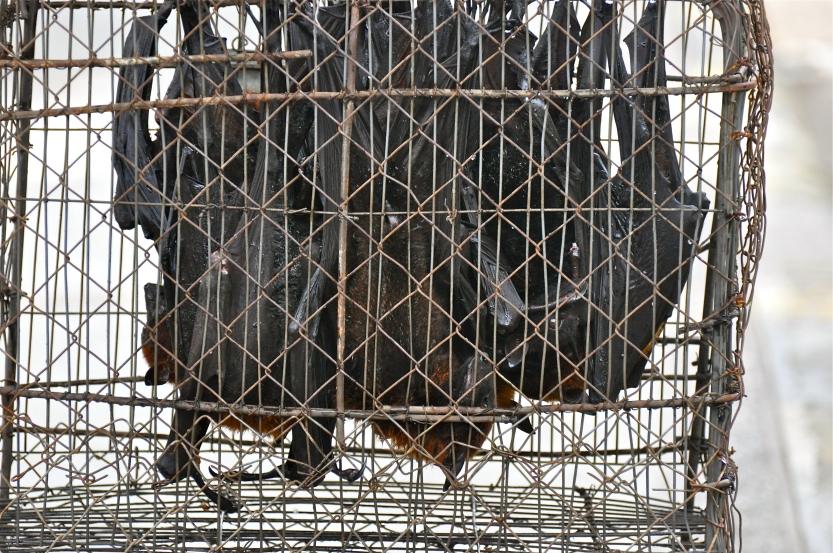
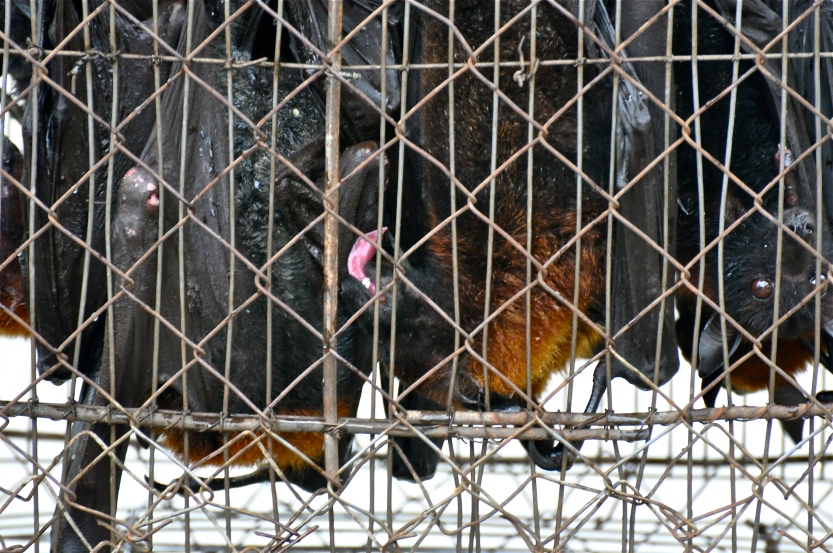
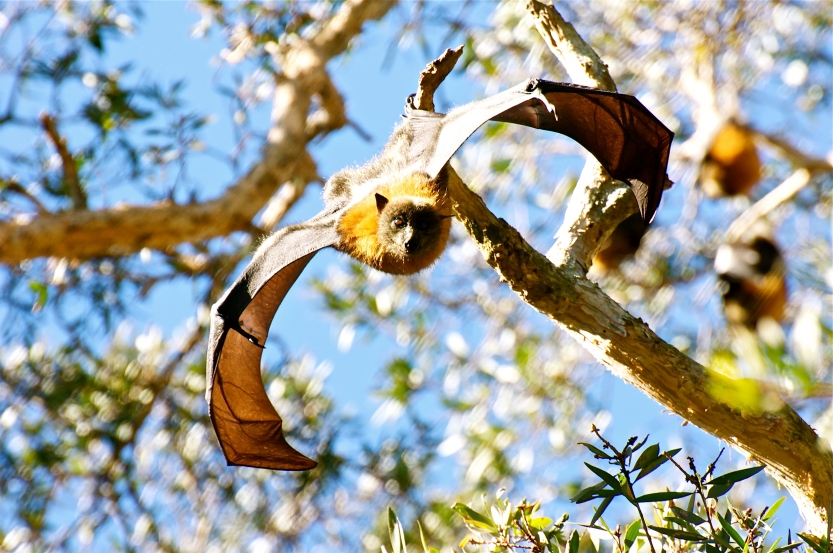
Wonderful post and photos! Have been at Austin’s Congress Avenue bridge at dusk when the bats fly out…bats also visit us on our little dock on hot summer evenings…I love having them (mosquito deterrent) as long as they stay out of my hair!
LikeLiked by 2 people
Thanks for the kind comment! These guys are definitely not going to get tangled in your hair. They are huge! 🙂
LikeLiked by 1 person
In Austin they are Mexican free tail bats and here in Ks either Big Brown or Eastern Red Bats…about 4-5″…so smaller than the Flying Fox for sure! 🙂
LikeLiked by 1 person
This flying creature of the night, this mammal not unlike ourselves, is beautiful, as is your gentle post, Thank y o u
LikeLiked by 2 people
Thanks for the kind words!
LikeLike
Bats are my wee little friends. I became especially fond of them after a very close run in with one. I was walking across my lawn when we lived in the country, at dusk, right into the path of a low-flying bat. I had no clue it had almost flown into me save for feeling a wisp of air on my bare arm and my son’s testimony. Now if only I could get them to roost in my yard in the city. I’m going to try a box for them this year. Wish me luck!
LikeLiked by 2 people
I went to school with a girl, her father was a zoologist. They had flying foxes at their house!! I loved playing there 🙂
LikeLiked by 2 people
What a great introduction to a much maligned species. As always, your writing is a beautiful and the animals you cover. Like many above, I have had wonderful experiences with these bright, cheerful, upside-down little people.
LikeLiked by 1 person
Thanks again for your kind words Margi! I couldn’t help but stop and admire these bats, whether they were flying over head or feeding in a low tree beside me. Such fascinating creatures and so graceful in flight in their own peculiar way.
LikeLike
The topic of flying foxes certainly causes a few arguments in Australia due to the smell and noise of large colonies and also their consumption of fruit crops. I’m very fond of them though and have a few that roost in my large trees at night. I was unaware of this fact until a sizzling hot, windy day when they started to overheat and made strange sounds. I went outside and noticed their suffering. I sprayed the tree with water but sadly some still dropped dead. They are the main pollinators of certain native trees but as you say are much maligned. Seeing them head off for the evening feed in large numbers is indeed a wonderful sight. Thanks for sharing another educational and beautifully illustrated post, David. 🙂
LikeLiked by 1 person
Thanks for the kind words and for adding to the conversation, Jane. I didn’t know that they are victims of heat like that. Great that you gave them a spray! 🙂 I always think it is a bit sad when we argue about a species right to exist alongside us because they make a smell that is not attractive to the human nose, or a noise, or a mess. I mean are we really so precious that we would rather artificially pollenate our native plants than put up with a bit of a smell? 🙂
LikeLiked by 1 person